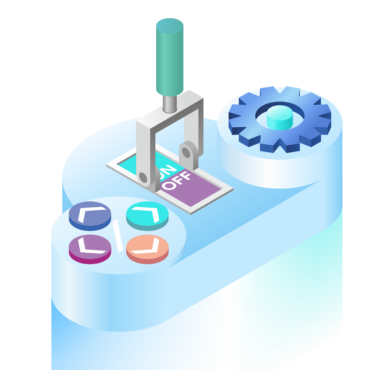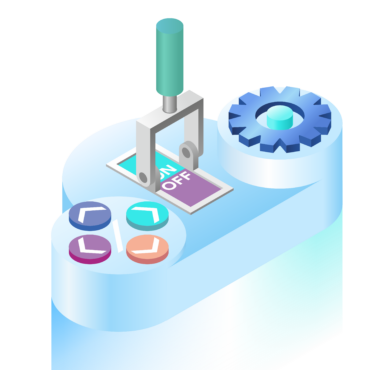Agile Project Management
Updated 27 Mar 2023
Agile project management is a methodology that has revolutionized the way software development is carried out. It’s an iterative and incremental approach to software development, where solutions are developed through the collaborative effort of self-organizing and cross-functional teams. In this article, we’ll explore the history of agile, the principles of agile project management, the benefits it offers, and how to become agile.
The History of Agile Project Management
The concept of agile project management can be traced back to the early 1990s when a group of software developers came together to discuss their frustrations with traditional project management approaches. These developers felt that the traditional approach to software development was too rigid, and it didn’t allow for changes in the project’s requirements.
In 2001, these developers formalized their ideas into the Agile Manifesto, which outlined the principles of agile project management. The manifesto emphasized the value of individuals and interactions, working software, customer collaboration, and responding to change. The Agile Manifesto has since become the foundation of agile project management, and it’s widely used by software development teams all over the world.
What is Agile Project Methodology?
The agile project methodology is a framework that emphasizes flexibility, collaboration, and customer satisfaction. It’s an iterative approach to software development that allows for changes in the project requirements, and it emphasizes the need for constant feedback from the customer. Agile project management is centered on the idea that the customer should be involved in the development process, and the development team should be able to respond quickly to any changes in the project requirements.
Agile Project Management Principles
Agile project management is based on a set of principles that guide the development process. These principles include:
- Customer satisfaction through early and continuous delivery of software.
- Embrace changes in requirements, even in the late stages of development.
- Deliver working software frequently, with a preference for shorter timescales.
- Collaboration between the development team and stakeholders.
- Build projects around motivated individuals and give them the environment and support they need.
- Use face-to-face communication to convey information effectively.
- Measure progress primarily through working software.
- Maintain a sustainable pace of development to ensure continuous progress.
- Continuous attention to technical excellence and good design enhances agility.
- Simplicity – the art of maximizing the amount of work not done – is essential.
Benefits of Agile Project Management
Agile project management offers several benefits, including:
- Increased customer satisfaction: Agile project management prioritizes customer collaboration, which leads to higher customer satisfaction levels.
- Flexibility: Agile project management allows for changes in project requirements, making it easier to adjust to changes in the market or customer needs.
- Transparency: Agile project management emphasizes constant communication between team members and stakeholders, resulting in increased transparency in the development process.
- Improved quality: Agile project management places a strong emphasis on technical excellence and good design, resulting in higher-quality software.
- Faster time to market: Agile project management encourages frequent delivery of working software, which speeds up the time to market.
How to Become Agile
In today’s fast-paced business environment, agility has become a key success factor. To become agile, businesses must adopt a new way of thinking and operating. Here are some steps businesses can take to become more agile.
First, businesses need to foster a culture of experimentation and learning. Agile organizations are not afraid to try new things and learn from their successes and failures. This requires creating a culture where innovation is encouraged and mistakes are seen as opportunities to learn and improve.
Second, businesses need to empower their teams. Agile organizations give their teams the autonomy to make decisions and take ownership of their work. This requires creating a culture of trust where team members feel empowered to take risks and make decisions that will benefit the organization.
Third, businesses need to prioritize collaboration. Agile organizations work in cross-functional teams, where team members from different departments work together towards a common goal. This requires breaking down silos and creating a culture where communication and collaboration are valued.
Lastly, businesses need to embrace change. Agile organizations are adaptable and able to quickly respond to changes in the market, customer needs, and technology. This requires creating a culture where change is seen as an opportunity rather than a threat.
Agile Project Management With Scrum
Scrum is a popular framework that helps teams collaborate and deliver software quickly. In this article, we’ll explore what the Scrum process is, how Kanban works within Scrum, agile project estimating, agile reporting, and backlog management and grooming.
Scrum is a framework that helps teams work together to develop and deliver high-quality software products. It is based on three pillars: transparency, inspection, and adaptation. Scrum utilizes an iterative approach to software development, with a focus on delivering a potentially shippable product increment at the end of each sprint. The framework includes various roles, such as product owner, Scrum Master, and development team, as well as ceremonies, such as sprint planning, daily Scrum, sprint review, and sprint retrospective.
-
How Kanban Works within Scrum
Kanban is a visual agile management tool that helps teams manage their work more efficiently. It can be used within the Scrum framework to improve the flow of work and increase team productivity. Scrum Kanban boards can be used to visualize the work items and their progress, allowing the team to see at a glance what needs to be done and what has been completed. In Scrum, the Kanban board can be used to visualize the sprint backlog and the progress of each item throughout the sprint.
Agile project estimating is the process of determining how much time and effort will be required to complete a project. Unlike traditional project management methodologies, agile project estimating involves breaking down the project into smaller, more manageable tasks. The team then estimates how long each task will take based on their past experience and knowledge of the project. This allows the team to plan the work more accurately and adjust their plans as necessary throughout the project.
Agile reporting involves the regular communication of project progress to stakeholders. In Scrum, this is typically done through the sprint review and sprint retrospective ceremonies. During the sprint review, the team presents the work they have completed during the sprint, and stakeholders provide feedback. During the sprint retrospective, the team reflects on the previous sprint and identifies areas for improvement. Agile reporting allows stakeholders to stay informed of the project’s progress and provide feedback throughout the development process.
-
Backlog Management and Grooming
Backlog management and grooming involve the management of the product backlog, which is a prioritized list of work items that the team needs to complete. In the agile Scrum methodology, the product backlog is owned by the product owner, who is responsible for prioritizing the work based on the customer’s needs. The team then works on the highest priority items first. Backlog grooming is the process of regularly reviewing the product backlog to ensure that it is up-to-date, well-defined, and properly prioritized. This allows the team to stay focused on the most important work items and adjust the backlog as necessary.
Conclusion
In conclusion, agile and Scrum project management frameworks are powerful waterfall methodologies that prioritize flexibility, customer satisfaction, and collaboration. It is a game-changer for software development, enabling teams to respond quickly to changes and deliver high-quality software frequently. Agile project management is based on a set of principles, including customer collaboration, working software, and responding to change. The benefits of agile project management include increased customer satisfaction, flexibility, transparency, improved quality, and faster time to market. To become agile, businesses must embrace a culture of experimentation and learning, empower their teams, prioritize collaboration, embrace change, and focus on delivering value to their customers. By adopting agile project management, businesses can improve their efficiency, flexibility, and responsiveness while prioritizing customer satisfaction.


